October – Domestic Abuse Awareness Month

Domestic abuse is very often a topic we are uncomfortable talking about, or even admitting that it exists, especially in our own family or circle of friends. But it does exist, in all social, economic and ethnic groups, and even in our parishes . It is important that we all become more aware of this. The following information is a summary of When I Call for Help : A Pastoral Responses to Domestic Violence Against Women, a downloadable resource from USCCB. 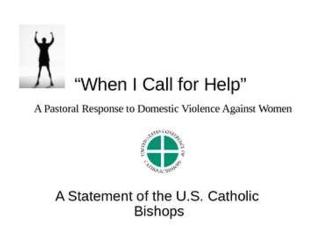
Domestic violence can include physical, sexual, psychological, verbal and economic abuse. Battering, name-calling, insults, threats to kill the woman or children, destruction of property, marital rape, and forced sterilization or abortion are examples of such abuse.
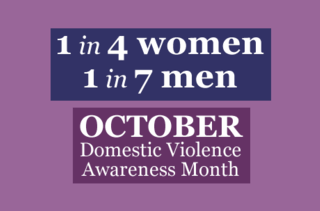 Women make up about 85% of the reported cases of domestic abuse. The greatest threat to women usually comes from intimate partners – a current or former husband or boyfriend. This also has serious repercussions for children in the home. Sometimes, the children are also beaten, and are more likely to develop drug and alcohol addictions as well as become abusers themselves.
Women make up about 85% of the reported cases of domestic abuse. The greatest threat to women usually comes from intimate partners – a current or former husband or boyfriend. This also has serious repercussions for children in the home. Sometimes, the children are also beaten, and are more likely to develop drug and alcohol addictions as well as become abusers themselves.
What does Scripture and the Church teach us about domestic abuse?
- Some women believe that the Bible says it is wrong to leave a marital relationship, while men believe that the Bible says that women should be submissive to them. What Scripture does teach us is the equal dignity of men and women and any relationship between them should be based on love and mutuality.
- Some men use Ephesians 5:22 about women submitting to their husbands to justify their behavior, but a more complete reading of Ephesians 5: 21-33, really talks about the mutual submission of husband and wife out of love for Christ.
- Sometimes male abusers also use Scripture to insist that their victims forgive them. Then, the victim feels guilty when she cannot do so. Forgiveness does not mean forgetting or ignoring abuse, or giving permission for the abuse to continue.
- Sometimes the abused woman sees the abuse she is suffering as a punishment for a past deed that she committed, or that it is “God’s will.” This image of God is the opposite of the way that Jesus treated women in his ministry. Remember how Jesus treated the woman caught in adultery, or the woman with the hemorrhage.
This resource stresses that no one is expected to stay in an abusive relationship. Some abused women believe that the church teaching on the permanence of marriage requires them to stay in an abusive relationship.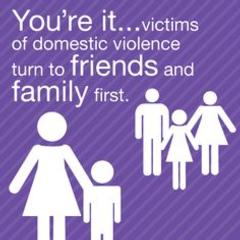
This resource goes on to discuss why men batter and why women stay in such relationships. It goes on to say that priests, deacons and lay ministers may very well be first responders to abused women and/or to the abusers and should know how to deal with these situations as well as know the local reporting requirements in the area where they live.
This resource goes on to make some practical suggestions for several audiences including abused women, for men who abuse, for pastors and pastoral staff. The following are some suggestions that really stood out for me.
Suggestions for pastors and pastoral staff:
- Put information about domestic violence and local resources in parish bulletins, newsletters, church bulletin boards and on parish websites. Do this on a regular basis, not just once a year. You can also put this information in women’s washrooms in church buildings.
- Keep an updated list of resources for abused women.
- Ask a staff member or volunteer who is willing to receive in-depth training on domestic violence and act as a resource to help others learn about abuse.
- Provide training on domestic violence to all church ministers, including priests, deacons, lay ministers, and staff members.
- Have an action plan ready if an abused woman asks you for help. This includes knowing how to respond to the woman when she discloses abuse, as well as knowing where and how to refer her for help.
Liturgies can also be used to draw attention to violence and abuse: 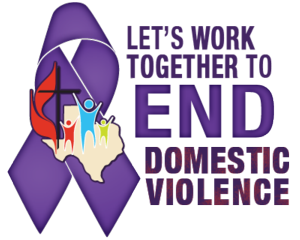
- Include a reference to domestic violence in homilies where appropriate. The section above What does Scripture and the Church teach us about domestic abuse? shows ways that scripture and church teaching have been used to justify domestic violence. The next time that any of these readings are part of the Sunday liturgy, the homilist can say publicly that such interpretations are clearly wrong and show what they really mean, especially in any meaningful and loving relationship.
- This practice also lets abused women know that someone cares, that the church publicly recognizes their plight, and it may also help them to recognize and name what is happening to them, and hopefully to seek help.
- Identify domestic violence as a sin in a parish reconciliation service.
- Include victims of abuse, people who abuse and those who work with them in the intercessory prayers. Again, not just once a year.
- Marriage preparation programs should include a discussion of domestic violence. Also be aware in baptismal preparation programs that the arrival of a new baby can increase the risk of domestic violence.
My Comments:
While this resource has concentrated on domestic abuse against women, because they are the usual victims, it is vital to remember that men, children and the frail elderly can be and are victims of domestic abuse. Some of the basic ideas in this resource can apply to all victims, but it may very well be even more intimidating or embarrassing for men to disclose domestic abuse because it goes against the male stereotype. Children and the frail elderly can and usually are the most vulnerable of all. Therefore, we should all become more aware of this issue and educate ourselves on the warning signs of any abuse and become more pro-active.
Pope Francis urges us to “go out into the streets,” with our ministry and our message. 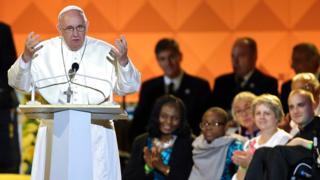 We may not be able to actually go into the homes where the domestic violence is happening, but by following some of the suggestions listed in this article, we can present ourselves, our message and our parish as a safe place, a church that is aware of the realities of life, a church that does not allow religion to be used as a justification for abuse of any kind.
We may not be able to actually go into the homes where the domestic violence is happening, but by following some of the suggestions listed in this article, we can present ourselves, our message and our parish as a safe place, a church that is aware of the realities of life, a church that does not allow religion to be used as a justification for abuse of any kind.
Because priests and religious have been guilty of abuse and the church hierarchy has covered it up, there are some who feel that we are hypocritical when we speak about abuse. But the behaviour of some, in the past, should not prevent us from being pro-active, both now and in the future, as we strive to end abuse of any kind.




No Comments